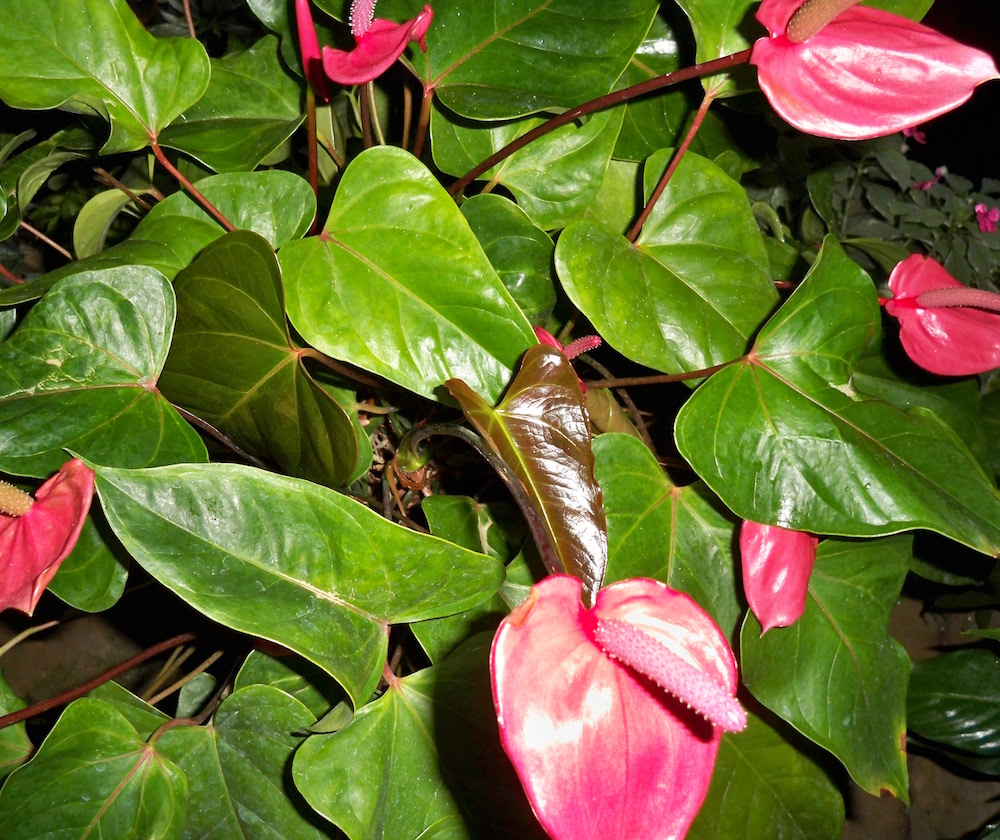The word Amaryllis actually means to twinkle, sparkle, or shine. The Amaryllis is a sparkling jewel of a plant with its large trumpet-like multiple blooms. During the holiday season when lights are twinkling and decorations sparkle, it is quite fitting that the Amaryllis plays a starring role in the festivities. Now that the thrill is gone, though, what do we do with our fading jewel? Hopefully this article will enlighten you, but first a brief history.
A member of the Amaryllidaceae family, the correct genus for the beautiful flower we commonly call Amaryllis is actually Hippeastrum. About 80 species of these bulbs find their origins in Central and South America. This makes it a tropical plant, so in this part of Georgia, with our frequent and heavy frosts, it is best grown in a pot and kept indoors in the winter months. Amaryllis was first discovered in Chile by Eduardo Frederick Poepping in 1828. Poepping, a physician from Leipzig, Germany, found the plant while he was on a botanical expedition. Many of the large-flowered Amaryllis we are familiar with today resulted from years of hybridization in Holland. Amaryllis are most commonly seen in shades of red, pink, or white but a few cultivars are light green or muted yellow.
Maintenance of Amaryllis is simple. After each bloom fades it should be cut off to the stem. The stem should be cut back to the bulb after it yellows and sags. Continue to water and fertilize the leaves through the summer gradually reducing both. In late summer, discontinue watering and let the plant “rest” for a minimum of 6 to 8 weeks. The bulb may be stored in the soil in a dry place with cool temperatures. DO NOT let the bulb freeze!
Keep in mind, when you are ready to start your Amaryllis growing again, you should give it seven to ten weeks to produce flowers. Remove the top two inches of the soil and replace it with good, rich compost. Water the pot thoroughly and place the plant in direct light. Water sparingly until leaves appear, and then gradually increase the amount of water, as overwatering will rot the bulb. To have your jewel shining again by Christmas, you should restart it by mid-October. If starting with new bulbs allow even more time.
“A” is also for Anthurium and this plant is truly a gem. All Anthuriums are horticultural hybrids of the wild green species native to tropical American rain forests. First discovered in Columbia, Anthurium is known to Spanish-speaking people as “capotillo colorado” (the little red cape). The name comes from the Latin ‘anthos’ meaning flower and ‘oura’ meaning tail. This description refers to the tiny flowers borne on cylindrical spadices that emerge from heart-shaped spathes. There are more than 700 species of this plant, which is a member of the Araceae family.
Hawaii has been a major commercial grower of Anthuriums since the 1940s. A large portion of production is cut flowers. Anthurium flowers can last as long as three weeks if cut in their prime.
Anthuriums are easy to grow as house plants. They are rarely bothered by pests and require minimal care. Pot your Anthurium in coarse well-drained soil such as a combination of peat, pine bark, and perlite. Anthuriums are tropical, so ideal temperatures for them would be between 65 and 80 degrees. Water thoroughly and allow to dry slightly between watering. Yellow leaves are an indication of over-watering or temperatures that are too cold. Bright, filtered light is preferred and if it is too shady the plant will not bloom. Use a slow release fertilizer or a liquid fertilizer at one-quarter strength. For those with small children or pets, please note that Anthuriums can be slightly toxic if ingested and the sap may irritate sensitive skin.
